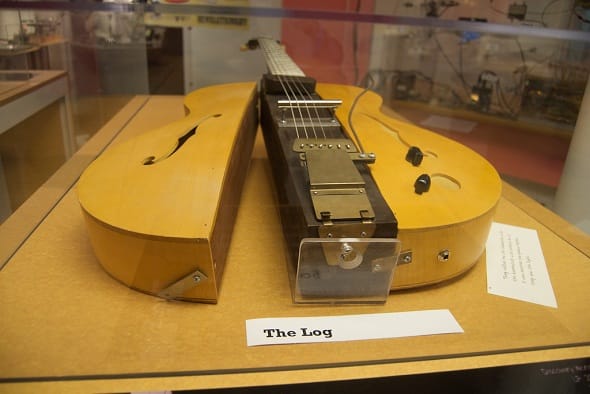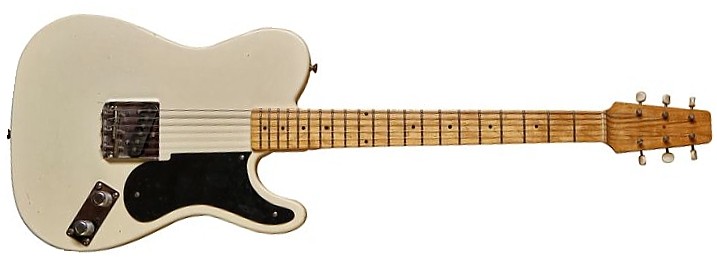Before you begin your guitar journey, it might be useful to gain some appreciation for all the voodoo and wonderful black magic that went into creating the first electric guitars.
If you’re not already aware, the first recognised electric guitars were manufactured in the 1930s by Rickenbacker Electro, founded by Adolf Rickenbacker. These first electric guitars used tungsten pickups. Pickups basically convert the vibration from the strings into electrical current which is then fed into an amplifier to produce sound.

The first electric guitars had smaller sound holes in the body and these guitars are referred to as being ‘semi-hollow’ bodied electric guitars and these are still used today, mainly due to the fact that they can either be amplified or played acoustically.
The electric guitar first gained widespread popularity during the ‘Big Band’ era of the 30s and 40s. It was the ideal solution to allow the guitar lines to be heard over the louder brass sections in jazz bands and orchestras.
Fast-forward to today. The electric guitars that are most widely used today have solid bodies. The solid body guitar was created by a very famous musician and inventor called Les Paul in 1941. Les Paul built a guitar made of solid wood, with no sound holes.
The first solid bodied guitar created by Les Paul was simply a rectangular block of wood, connected to a neck with six steel strings, affectionately referred to as “The Log”. Les Paul’s original solid bodied guitar shape has evolved and been improved on from the rectangular shape to the more rounded figure-8 shape of Gibson guitars today. The Gibson Les Paul guitar was first sold by the Gibson Guitar Corporation in 1952.

The Log is pictured above. The original design was just the dark piece in the center. The figure-8 side pieces were added later to enhance its sound.
Around the same time period, a man called Leo Fender came up with an alternative solid body electric guitar of his own. During the late 1940s, Fender introduced the ‘Broadcaster’ electric guitar, which was later renamed the ‘Stratocaster’. The Stratocaster was officially debuted to the public in 1954. This guitar quickly became nicknamed ‘The Strat’.

Leo’s guitar was very different when compared to the Les Paul. It had a different shape, different hardware and was noticeably lighter in body weight. The Fender Stratocaster is considered by some to be the second-most popular guitar in the world today. Depending on who you talk to, the most popular guitar in the world is largely considered to be the Les Paul.
Over the years, many companies. including Ibanez, Paul Reed Smith, Yamaha and ESP, etc. have all created solid body electric guitars of their own. The most popular body shapes for electric guitars however, are still based off a Les Paul, Strat or Rickenbacker guitar shape.
If there are any guitar aficionados that could help to make this post even more accurate, please feel free to leave a comment below. I’d love to hear from you!
